When you wander through Córdoba’s Jewish Quarter, or Judería, it really does feel like you’re stepping into a secret side of Andalusia. Flower-filled patios peek out from behind whitewashed walls, and narrow cobbled streets twist off in all directions, practically begging you to get lost for a while.
Córdoba’s Judería mixes history, beauty, and daily life in such a charming way. It’s an unforgettable place to walk.
Every turn brings something different—a centuries-old synagogue, a quiet courtyard, or stories tucked into corners. Here, you sense both the calm of the past and the energy of daily life blending together.

I found myself slowing down, caught by little details, wanting to see what was around the next bend.
Wandering the Whitewashed Alleys of the Judería
Whitewashed walls bounce the bright Andalusian sun back at you, while the blue sky peeks overhead. Walking in Córdoba’s Jewish Quarter means stepping into living Spanish heritage.
Every corner opens up a new view, a faint whiff of jasmine, or the sudden laughter from a hidden patio.
Navigating the Maze of Narrow Streets
The Judería really is a maze of winding, narrow streets. Many alleys barely fit two people side by side.
Maps don’t help much, since roads twist and loop in ways you don’t expect. Getting lost is almost guaranteed—and honestly, that’s part of the fun.
I just let the cobblestones guide me, slipping through tiny archways and under laundry strung above. Calle Judíos stands out as one of the most famous streets—its old stones have felt centuries of footsteps.
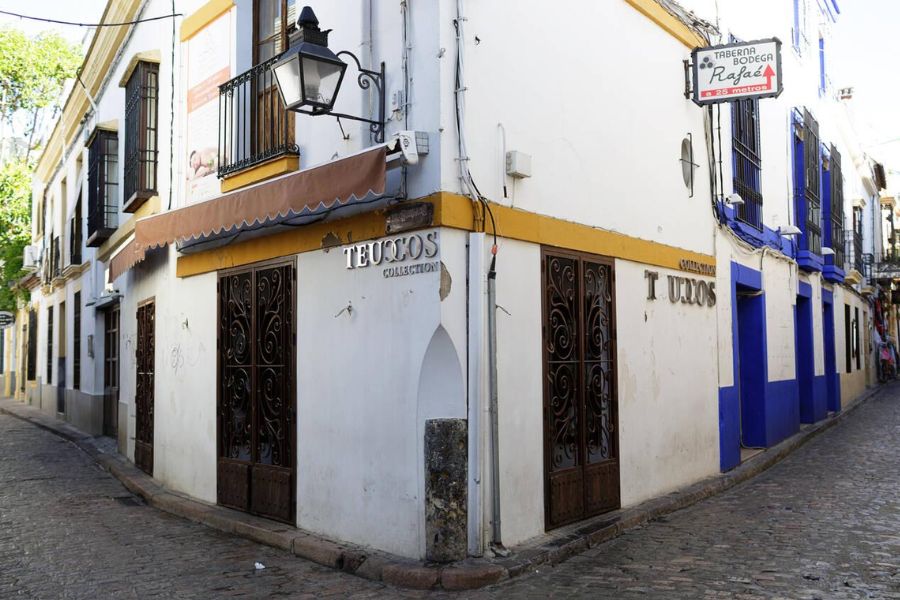
The architecture here mixes Moorish arches, Spanish tiles, and wrought iron balconies into a quirky patchwork.
It’s easy to stumble onto a hidden square or a peaceful patio bursting with flowers. Every alley brings a surprise: maybe a centuries-old synagogue, a tiny artisan shop, or a cool bench in the shade.
If you walk slowly, time seems to slow with you.
Sights and Sounds Along the Way
Bright flower pots line the white walls, splashing color everywhere. The smell of orange blossoms drifts by.
I passed patios with bubbling fountains, their coolness a welcome break from the sun. Calleja de las Flores, or Alley of the Flowers, really pops in spring—blooms everywhere, plus a glimpse of the Mezquita’s tower between hanging baskets.
Soft guitar music and distant laughter float through the air. Locals chat in doorways, sharing stories you only half catch.
Kids play in shaded corners while tourists snap photos of colorful doors or tiled signs. Andalusian customs live in these moments: open doors, friendly greetings, and a pace that never seems rushed.
Tips for an Authentic Walking Experience
Comfort matters here. I wore light clothes and sturdy shoes—those cobblestones can trip you up.
Mornings or late afternoons work best for walking, since you skip the crowds and the worst of the heat. I tried to blend in by speaking a little Spanish: Buenos días, gracias, or just smiling at shopkeepers.
Stopping for a cold gazpacho or a tapa at a tiny café made the walk even better. Instead of rushing, I watched daily life—neighbors chatting, families tending flowers, shop owners sweeping their steps.
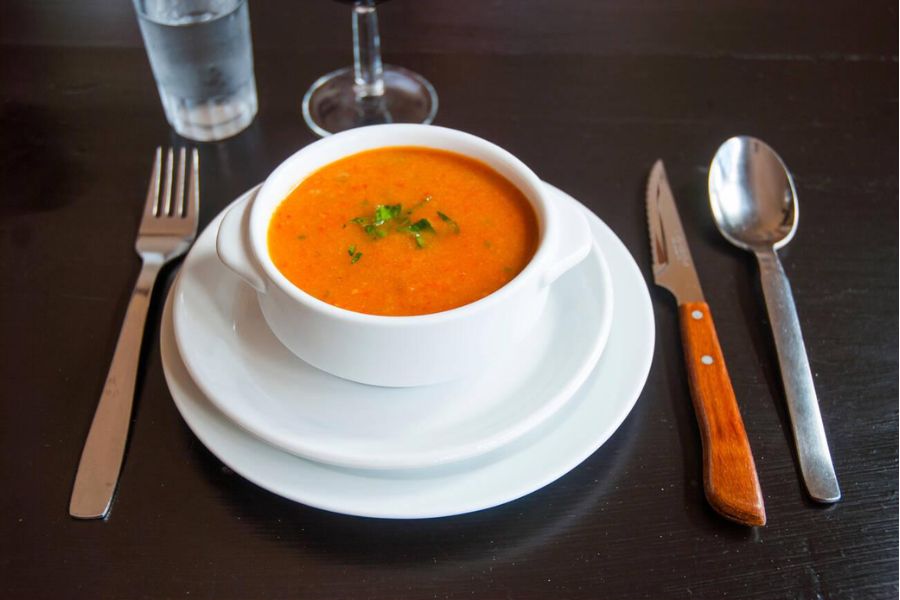
I took photos, sure, but also made myself put the phone away to just soak it all in. Wandering here isn’t about following a map; it’s about letting the city’s character and charm pull you along.
Enchanting Patios: Córdoba’s Tradition of Flower-Filled Beauty
Colorful flowers spill from patios tucked behind whitewashed walls all over Córdoba. These private courtyards mix Andalusian architecture, lively Spanish traditions, and a creative spirit that locals and visitors both love.
Patio Culture and the Festival of Los Patios
In May, Córdoba surprises travelers with the Festival of Los Patios. Residents swing open their gates, letting strangers wander through courtyards bursting with color, scents, and music.
Patios hold a special place in Andalusian heritage. Roman and Moorish design shaped these spaces—think tile mosaics, central fountains, and a canopy of potted geraniums and jasmine.
During the festival, the narrow streets fill with travelers, photographers, and families. Each patio turns into a shared gift, a piece of Spanish art, and an open invitation to experience Córdoba’s way of life.
Hidden Gems and Secret Courtyards
Even when the festival ends, the best patios don’t vanish—they stay hidden behind wooden doors and iron gates year-round. As I wander La Judería, I always peek through open doorways.
Some patios feel almost silent, just a small fountain or birdsong echoing off old stones. Locals sometimes let you peek inside if you ask nicely.
Others belong to old palaces and museums, like the Palacio de Viana, which has more than a dozen unique courtyards. Every hidden patio feels like a piece of Córdoba’s living history, shaped by Moorish, Jewish, and Christian influences.
Capturing Patios Through Art and Photography
Patios have inspired Spanish artists and travel writers for ages. Painters try to catch the way sunlight hits rough walls or the bright blues and reds of potted blooms.
Travelers with cameras find endless close-ups—azulejo tiles, hanging baskets, or vines curling up a wall. I love taking photos early in the morning, when soft sunlight filters through the greenery.
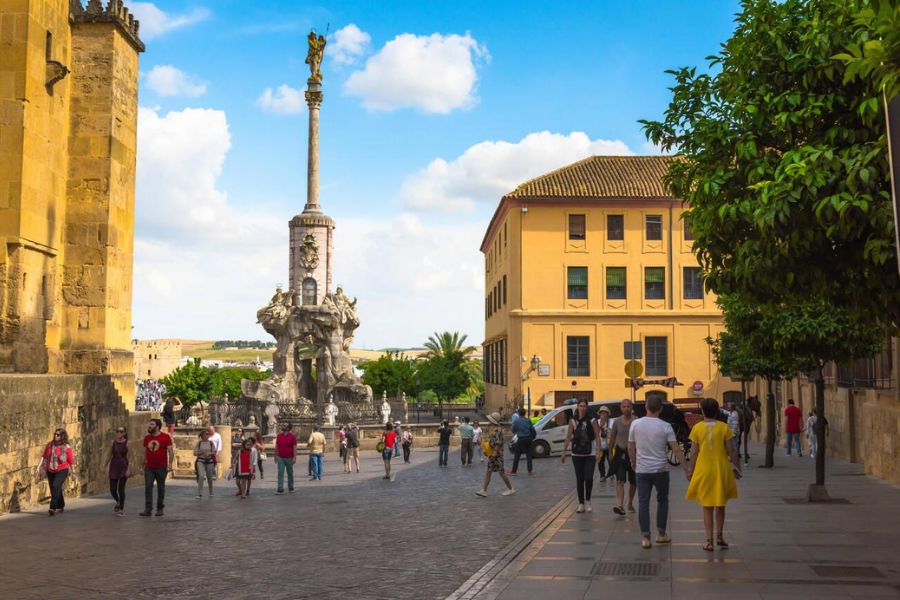
Artists set up easels during festivals, while visitors stop to sketch or jot notes in journals. For anyone who loves Spanish heritage or Andalusian culture, Córdoba’s patios are a living gallery—everyday beauty that begs to be noticed.
Heritage Landmarks in the Jewish Quarter
Cobblestone streets, centuries-old buildings, and bursts of flowers shape Córdoba’s Jewish Quarter. This area blends historic sights with rich cultural heritage.
Exploring here felt like time travel—past synagogues, legendary monuments, and Andalusian treasures.
The Synagogue and Historical Monuments
As I walked through the Judería, I found Córdoba Synagogue tucked along Calle de los Judíos. This small 14th-century building is one of just three medieval synagogues left in Spain.
White plaster walls carved with Hebrew inscriptions and intricate designs remind you of the deep Jewish roots here.
Nearby, Plaza Maimónides honors the philosopher Maimonides with his statue. The Casa de Sefarad, right next door, is a house-museum that keeps Sephardic heritage alive.
Inside, I learned about Jewish life, history, and traditions in Córdoba. Every turn down these narrow lanes brings another surprise—a centuries-old hospital, ancient walls, or a glimpse of a hidden courtyard.
Even the street signs, marked with menorahs, let me trace where Jewish life once flourished.
Exploring la mezquita: A Marvel of Moorish Spain
You can’t visit Córdoba without seeing La Mezquita—the Mosque-Cathedral. Just outside the Jewish Quarter, its red-and-white arches and sprawling prayer hall are stunning.
The Moors built it in the 8th century, and later it became a cathedral. The architecture shows both Islamic and Christian touches.
Inside, the Mihrab (prayer niche) dazzles with colorful mosaics. Christian chapels, altars, and a Renaissance nave came after the Reconquista, blending two worlds in one building.
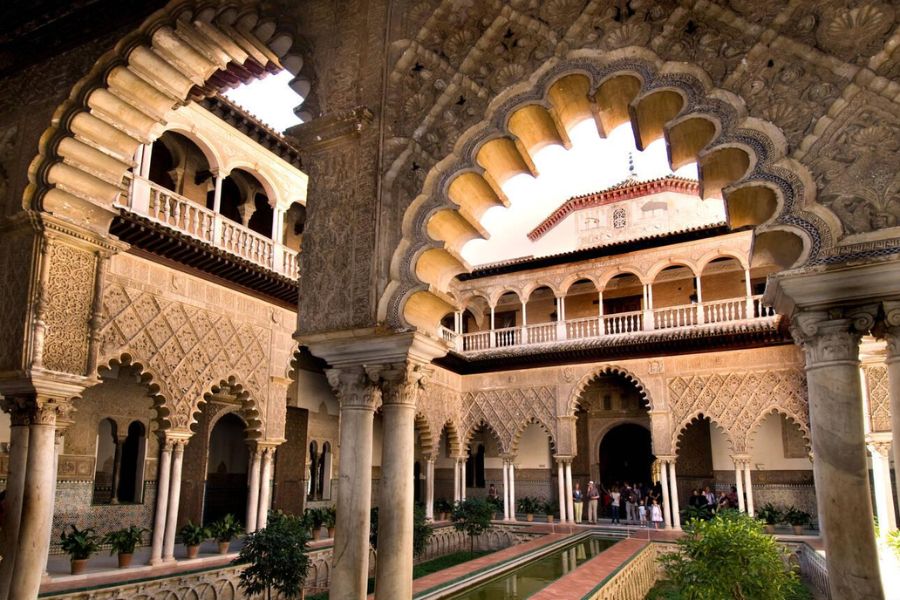
This spot is a UNESCO World Heritage Site and a classic example of Andalusian architecture.
You can spend hours here, just admiring marble columns, golden mosaics, and peaceful courtyards. La Mezquita isn’t just a landmark—it’s a living piece of Córdoba’s layered history.
Museums, Palaces, and Cathedrals Nearby
Within a short walk, I found a mix of museums, palaces, and cathedrals. The Alcázar de los Reyes Cristianos stands as a fortress-turned-palace, with gardens and towers.
Its patios overflow with orange trees and fountains—perfect for a stroll or a photo. I ducked into the Museo Taurino to see Córdoba’s bullfighting history, and the Casa Andalusí gave me a glimpse of local crafts and Moorish living rooms.
The nearby Roman Bridge links both sides of the city and frames lovely river views. If you’re into cathedrals or churches, the area around the Judería has more impressive sites, each telling another piece of Andalusia’s story.
Sightseeing here kept surprising me with new details about Spanish heritage.
Food, Wine, and Tapas Adventures in Córdoba’s Judería
Córdoba’s Judería is a treat for the senses—full of traditional Andalusian flavors, unique local dishes, and cozy bars pouring some of Spain’s best wines.
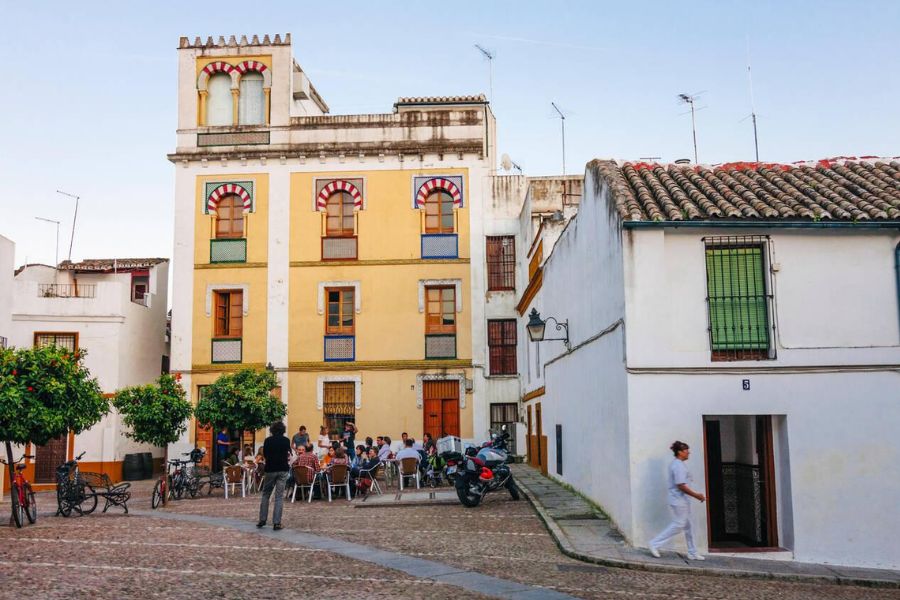
Each meal here feels like an experience, whether you’re eating in a classic patio or tasting bold cheeses and cool sangria.
Top Patios and Restaurants for Traditional Andalusian Cuisine
Whitewashed patios overflowing with flowers often hide the city’s best restaurants. I wandered down cobblestone alleys and found gems like Bodegas Campos and El Churrasco.
Both spots welcome you with charming patios and a bit of history. La Judería is packed with cozy places serving Andalusian classics—perfect for sampling local food in a laid-back setting.
Popular choices:
- Taberna Salinas: Great for a casual meal and trying different tapas.
- Casa Pepe de la Judería: Famous for its rooftop and views over the old city.
- Bar Santos: Known for their giant slices of Spanish omelette (tortilla).
Sitting in a shaded courtyard, jasmine in the air, I tasted food that reflected both Moorish and Spanish roots.
Signature Dishes: Gazpacho, Tapas, and Serrano Ham
Córdoba’s Judería serves up salmorejo, a thicker cousin of gazpacho made with tomatoes, bread, olive oil, and topped with hard-boiled egg and serrano ham. Every restaurant seems to have its own twist, especially on warm spring afternoons.
Tapas—small plates for sharing—often include eggplant with honey or spicy chorizo. I never skip manchego cheese—nutty, firm, and just right with rustic bread.
A quick taste guide:
| Dish | What to Expect |
|---|---|
| Salmorejo | Thick, creamy, chilled tomato soup |
| Gazpacho | Light, refreshing cold soup |
| Serrano Ham | Thin, salty, aged pork slices |
| Manchego Cheese | Nutty, firm sheep’s milk cheese |
| Eggplant with Honey | Sweet-savory fried eggplant |
Sampling these dishes, I started to understand why Andalusian food is famous for bold, simple flavors.
Spanish Wines and Sangria in Local Bars
No meal in Córdoba’s Judería feels complete without local wine or a glass of sangria. Many bars serve Montilla-Moriles—a dry, sherry-like wine made just outside the city.
The region also offers lively reds and aromatic whites, perfect with fish or cheese. Most evenings, I ended up with a glass of wine or a jug of sangria, loaded with fresh fruit.
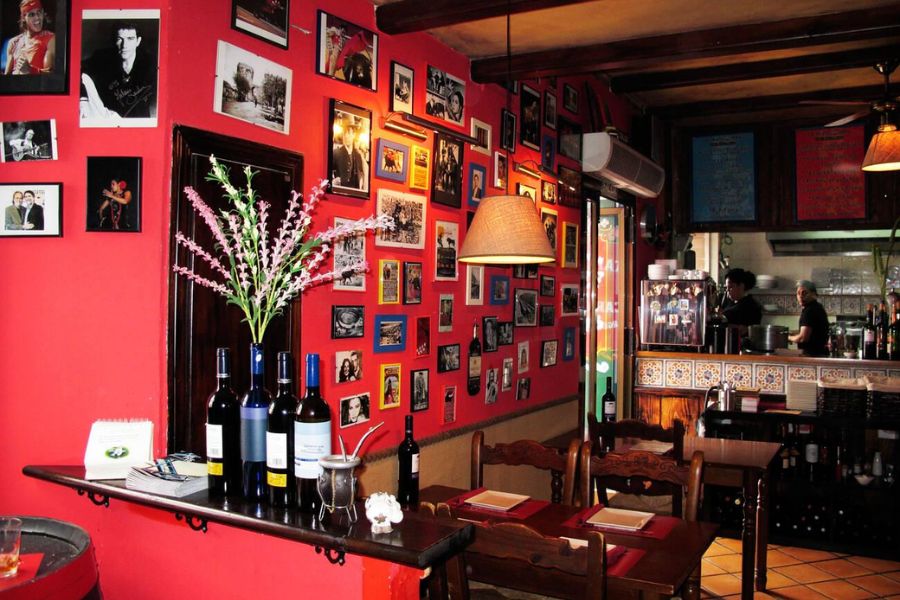
Some favorites: Taberna El Capricho and Bar La Tranquera, where locals gather for drinks and conversation.
Watching the sunset from a flower-filled patio, sipping Andalusian wine, I felt like I’d finally found the city’s rhythm.
Practical Travel Tips for Visiting Córdoba’s Jewish Quarter
Finding a good place to stay and getting around easily really made my trip smooth and memorable.
Exploring the Judería feels much more enjoyable if you know where to sleep, how to get around, and where to pick up authentic local crafts.
Accommodations: Where to Stay in and Near the Judería
I realized that staying inside or near the Jewish Quarter puts you right in the heart of Córdoba’s history.
A lot of travelers pick charming hotels tucked between whitewashed walls, or small guesthouses with open courtyards full of bright flowers.
If you’re looking for something special, Parador de Córdoba gives you comfort with a bit of Spanish flair, though you’ll need to drive a short way from the historic center.
Luxury hotels like Las Casas de la Judería mix old-world character with modern touches.
On a tighter budget? You’ll find plenty of hostels and simple hotels just outside the quarter.
Honestly, if you’re planning to visit during the spring festival season, you should probably book early—places fill up fast.
A few top picks in or near the Judería:
| Hotel Name | Style | Distance to Judería |
|---|---|---|
| Las Casas de la Judería | Luxury, historic charm | In the Judería |
| Hotel NH Collection Amistad | Modern with tradition | 2 min walk |
| Hospedería del Atalia | B&B, rooftop views | In the Judería |
| Parador de Córdoba | Resort-style, panoramic | 10 min drive |
If you stay nearby, you get quiet mornings and easy walks to the Mezquita, shops, and tapas bars.
Getting There and Getting Around
You can reach Córdoba easily by train—I hopped on the high-speed AVE line from Madrid and got there in under two hours.
From the station, the Judería sits about a ten-minute taxi ride away, or you can just walk for 25 minutes; it’s mostly flat, except for a few cobbled lanes right near the center.
Inside the quarter, cars almost disappear and the streets turn narrow.
I found walking the best way to spot flower-filled patios and little hidden squares.
The city runs small electric buses and offers bike rentals, but honestly, most main sights are just a short stroll apart.

Taxis help a lot if you’re carrying bags, and I sometimes grabbed one if I stayed out late.
If you want to travel beyond the city, local buses leave from stops near the Roman bridge.
Shopping and Supporting Local Artisans
Honestly, one of my favorite things was wandering through the tiny shops along Calle de los Judíos. The Judería bustles with handmade silver jewelry, colorful ceramics, and leather goods that families have crafted for generations.
I stopped often to watch artisans shape silver Hamsa charms or paint those impossibly bright tiles. It’s mesmerizing—how do their hands move so quickly?
Shops usually post their hours outside, and most close for lunch in the early afternoon. I learned to double-check opening times before heading out, or else I’d end up staring at a locked door.
When I bought something from local artisans, it felt like more than just a souvenir. I got to help keep old traditions alive, which is worth way more than a mass-produced trinket.
Recommended shopping stops:
- Maimónides Craft Shop: Unique Judaica, books, and art.
- Galería de la Cerámica: Hand-painted Andalusian tiles and plates.
- Taller Platería Cordero: Silver filigree jewelry.
I picked out gifts that felt personal—small, easy to pack, and so distinctly Andalusian. Now, every time I see those pieces, I remember the people who made them and the streets where I found them.

